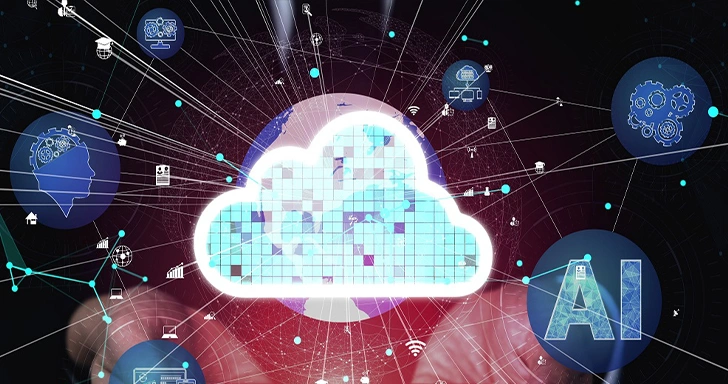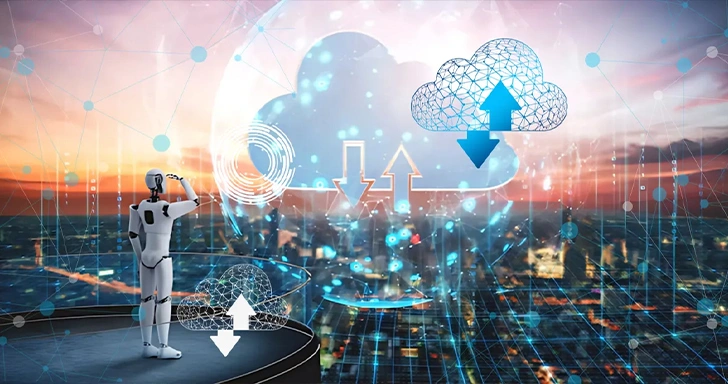The Future of Cloud in 2026: Multi-Cloud and AI-Driven Workloads
The world of cloud computing is evolving faster than ever before. As we move toward 2026, organizations are realizing that a single cloud approach can no longer meet all their business needs. The future lies in multi-cloud ecosystems powered by AI-driven workloads — a dynamic combination that delivers agility, intelligence, and resilience at scale.
The Shift Toward a Multi-Cloud World
In 2026, multi-cloud strategies will become the new standard for enterprises. Instead of depending on a single provider, companies are distributing their workloads across multiple cloud platforms — such as AWS, Google Cloud, Microsoft Azure, and Oracle Cloud — to optimize performance, cost, and compliance.
This shift isn't just about diversification; it's about empowerment.
Businesses can now choose the best tools and services from each cloud provider without being locked in. For example:
Use Google Cloud for AI and ML model training
Leverage Google's advanced machine learning capabilities and specialized AI infrastructure to develop and train complex models efficiently.
AWS for data storage and compute scalability
Utilize Amazon's robust storage solutions and elastic compute resources to handle fluctuating workloads with ease.
Azure for enterprise integrations and analytics
Take advantage of Microsoft's enterprise-grade integration tools and powerful analytics platforms for business intelligence.
The future of cloud computing is multi-dimensional, where interoperability, flexibility, and governance become the foundation of digital success.
AI-Driven Workloads: The Power Engine of 2026
Artificial Intelligence is no longer a standalone tool; it's becoming the core engine of enterprise cloud workloads. By 2026, AI-driven workloads will dominate nearly every industry — automating decision-making, optimizing resources, and predicting future outcomes.
Examples of AI-Driven Cloud Applications:
The fusion of AI and Cloud is driving a new era of intelligent automation, where systems learn continuously, adapt instantly, and deliver insights at unprecedented speed.
The Rise of Cloud Intelligence: From Storage to Strategy
In the early years of cloud adoption, the primary focus was on data storage and cost savings. By 2026, the conversation shifts toward intelligence and innovation.
AI and ML embedded into cloud platforms are transforming raw data into strategic business insights. Tools like BigQuery, Databricks, and Azure Synapse now integrate AI natively, allowing organizations to extract value without deep technical barriers.
This evolution makes the cloud a decision-making platform, not just an IT infrastructure.
Enterprises will leverage cloud intelligence to:
The future of cloud is not about where data lives — it's about how intelligently it's used.
Data Security in a Multi-Cloud World
As workloads expand across multiple clouds, security and compliance become more complex — but also more critical.
By 2026, businesses will adopt AI-driven security frameworks capable of detecting threats in real-time across diverse cloud environments.
Key innovations shaping secure multi-cloud ecosystems include:
Zero Trust Architectures
That authenticate and validate every user and device before granting access, ensuring no implicit trust is placed on any entity within or outside the network perimeter.
AI-based anomaly detection
That identifies unusual data patterns instantly, flagging potential security breaches before they can cause significant damage.
Unified Security Dashboards
Integrating multiple cloud providers under one control plane, providing comprehensive visibility and management of security across all environments.
Quantum-resistant encryption
Preparing for the post-quantum era of cybersecurity by implementing encryption methods that can withstand attacks from quantum computers.
Multi-cloud doesn't mean multiple risks — it means multiple layers of protection, intelligently orchestrated by AI.
Cloud Optimization Through Generative AI
One of the most exciting advancements heading into 2026 is the integration of Generative AI into cloud management.
Generative models like GPT-based engines and Google's Gemini are being embedded into cloud platforms to enhance decision-making, automate code creation, and optimize workloads dynamically.
Imagine a scenario where:
This marks the birth of self-optimizing cloud environments, where human engineers focus on creativity and innovation, while AI handles the heavy lifting.

Industry Transformation Through Cloud and AI
Every sector is reimagining its workflows using cloud and AI synergy:
Healthcare
AI models in cloud platforms are predicting patient risks, enabling real-time diagnostics, and securing health data with HIPAA compliance.
Education
Cloud-based learning systems are using AI to personalize content, automate assessments, and ensure scalability for millions of learners.
Finance
FinTech firms use cloud AI for fraud detection, credit scoring, and regulatory compliance automation, reducing risk and improving efficiency.
Manufacturing
Factories leverage cloud AI for predictive maintenance, robotics integration, and energy efficiency optimization, reducing downtime and costs.
Retail
Retailers rely on multi-cloud analytics to forecast demand, manage inventory, and deliver hyper-personalized shopping experiences.
In every case, AI-driven cloud workloads are unlocking unprecedented efficiency, agility, and innovation.
The Future Cloud Strategy for 2026 and Beyond
By 2026, enterprises will redefine their cloud strategies around three major pillars:
Multi-Cloud Integration
Seamless interoperability across platforms through APIs, containerization, and orchestration tools like Kubernetes.
AI-First Architecture
AI models embedded into every layer — from data ingestion to security to customer engagement.
Sustainability and Cost Transparency
Optimizing energy usage and reducing operational overhead through green cloud initiatives.
In essence, cloud computing will evolve from being a technology choice to a business strategy enabler.
Final Thoughts: The Road Ahead
The future of cloud computing in 2026 will be defined by intelligence, automation, and integration.
The convergence of multi-cloud architectures and AI-driven workloads will not only simplify operations but also accelerate innovation across industries.
Organizations that adapt early — investing in interoperability, data governance, and AI integration — will lead the digital economy.
The rest will play catch-up in a world where cloud intelligence is the new competitive advantage.


